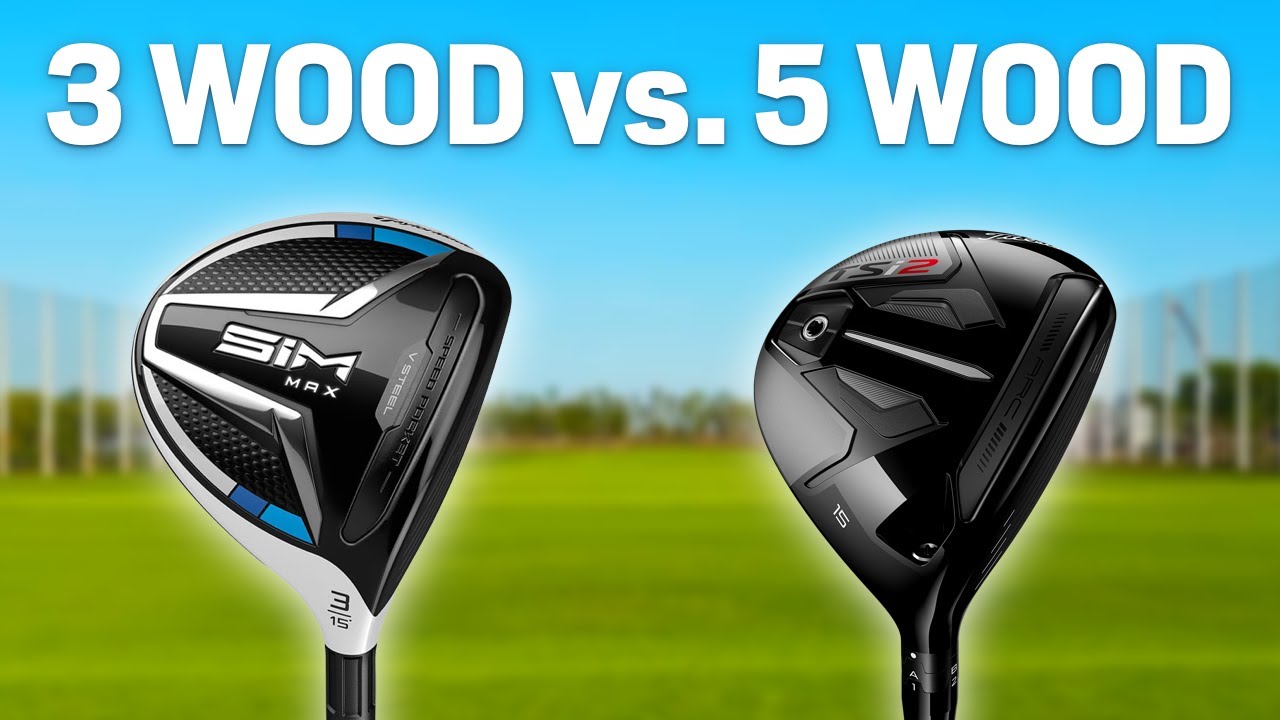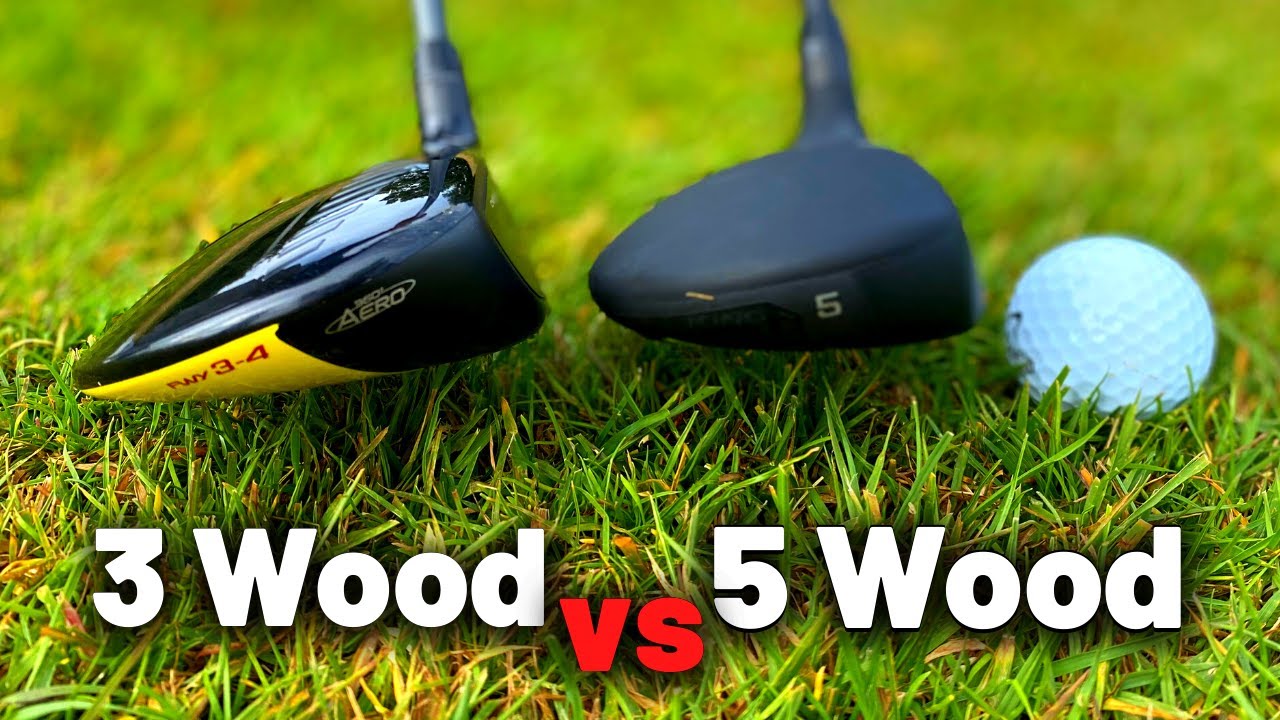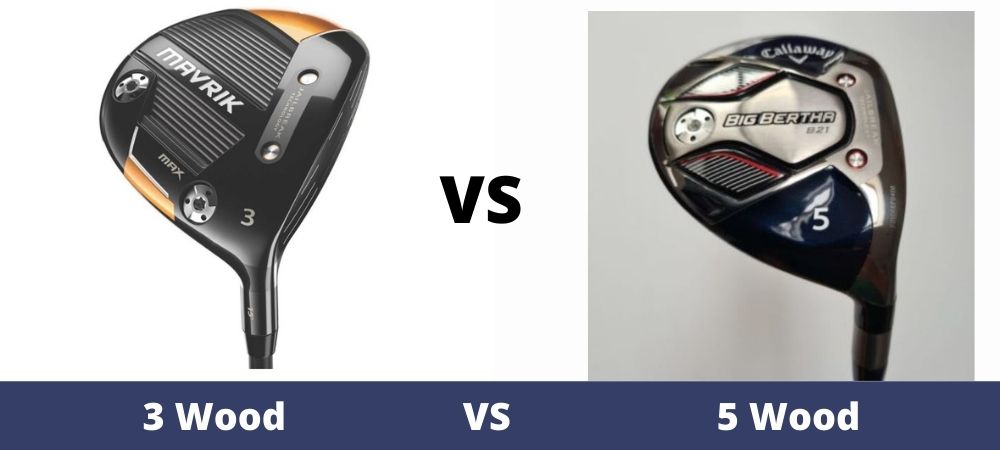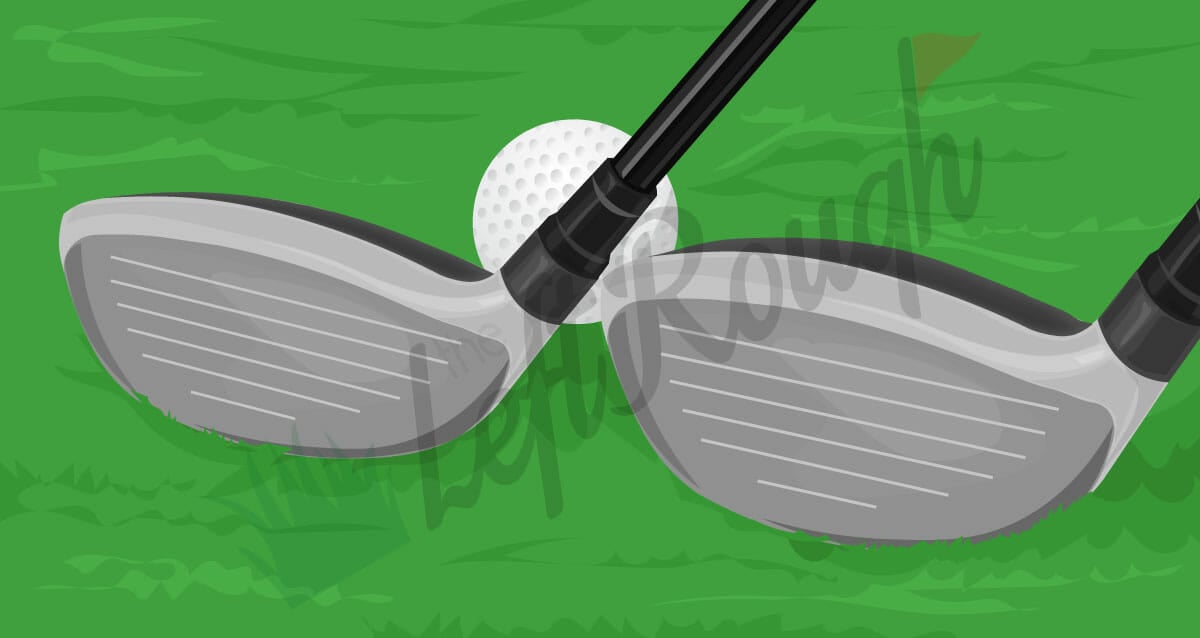Golfers often face the question: should I carry a 3 wood or a 5 wood? Both are fairway woods, but each serves a slightly different role in your bag. Choosing the right one can influence distance, accuracy, and confidence on the course.
In this guide, we’ll break down the differences between the 3 wood vs 5 wood so you know which one suits your game best.
Quick Comparison: 3 Wood vs 5 Wood
| Feature | 3 Wood | 5 Wood |
|---|---|---|
| Loft | 13°–15° | 17°–19° |
| Average Distance | 210–240 yards | 190–215 yards |
| Shaft Length | ~43” | ~42” |
| Best Use | Off the tee, long par-5 approaches | Fairway approach, higher launch |
| Forgiveness | Lower | Higher |
| Who It Suits | Confident strikers, mid-low handicaps | Beginners, mid-high handicaps |
What is a 3 Wood?
A 3 wood is the longest-hitting fairway wood in most golf bags. With a loft between 13–15 degrees, it produces a lower, penetrating flight with plenty of rollout. Many golfers use it as an alternative to the driver when accuracy is more important than distance.
-
Typical distance: 210–240 yards
-
Best scenarios: Off the tee, long second shots on par 5s
-
Pros: Great distance, versatile, driver replacement
-
Cons: Less forgiving, harder to hit off the deck
What is a 5 Wood?
The 5 wood has a loft between 17–19 degrees, which makes it easier to launch and more forgiving than a 3 wood. It’s particularly useful for approach shots from the fairway or light rough, landing softly on the green.
-
Typical distance: 190–215 yards
-
Best scenarios: Long approach shots, higher ball flight, getting out of tricky lies
-
Pros: Easier to hit, more forgiveness, higher launch
-
Cons: Less distance than 3 wood
3 Wood vs 5 Wood: Key Differences
1. Loft & Distance
The 3 wood is longer, while the 5 wood launches higher. If you want maximum distance, the 3 wood wins. If you want more carry and stopping power, the 5 wood is ideal.
2. Forgiveness
The 5 wood is more forgiving and beginner-friendly. The 3 wood demands more precise contact, which is why higher handicappers often struggle with it.
3. Playability
-
3 wood: Great from the tee, harder from the fairway.
-
5 wood: Easier from fairway and rough, softer landings on greens.
4. Confidence Factor
Most golfers feel more confident with a 5 wood. The shorter shaft and extra loft make it easier to control compared to the demanding 3 wood.
Which is Better for Beginners?
For beginners and high handicappers, the 5 wood is usually the better choice. It’s easier to launch, more forgiving, and helps build consistency.
That said, as your game improves, adding a 3 wood provides a valuable distance option when driver accuracy is an issue.
Should You Carry Both?
Many golfers benefit from carrying both clubs:
-
3 wood: Perfect for tee shots on tight par 4s and reaching long par 5s.
-
5 wood: Reliable for approach shots and situations where a higher launch is needed.
If you prefer a lighter setup, consider pairing just one fairway wood with a hybrid, which can replace the other.
FAQs: 3 Wood vs 5 Wood
Q: Can a 5 wood replace a 3 wood?
Not completely. The 5 wood is shorter and higher launching, while the 3 wood gives you more distance off the tee.
Q: Why do pros carry both?
Tour players need versatility. Carrying both fills distance gaps and gives them options for different conditions.
Q: Should beginners skip the 3 wood?
Yes, in most cases. Beginners often benefit more from a forgiving 5 wood until their swing speed and consistency improve.
Final Thoughts: Which Club Should You Choose?
The 3 wood vs 5 wood decision comes down to your skill level and goals:
-
Choose a 3 wood if you need a reliable driver alternative and want extra distance.
-
Choose a 5 wood if you want forgiveness, confidence, and softer landings.
-
If possible, carry both for complete coverage of distance and shot types.









